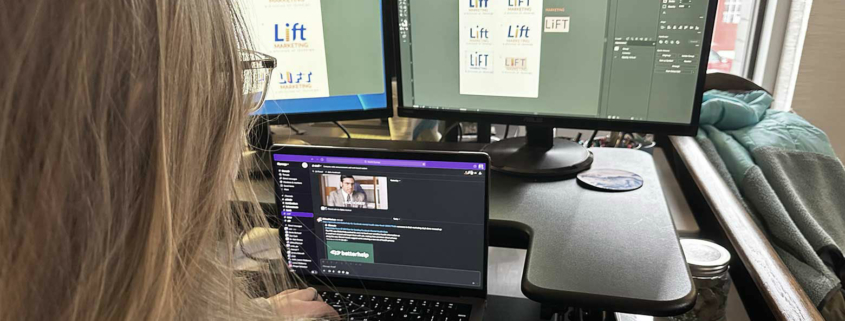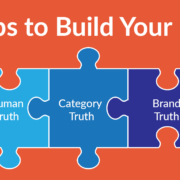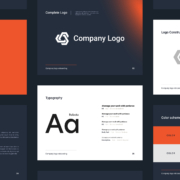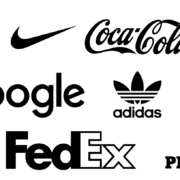All the Steps of the Logo Design Process
A logo identifies a company and a brand at a glance. The best logos are simple and timeless – designing a great logo is almost like capturing lightning in a bottle. That’s why the logos of many of the world’s largest and most successful businesses only change incrementally over decades.
Exactly how does the logo design process work? You’ve come to the right place. We’ll walk you through the different steps that go into creating a logo for your company. Every agency’s process varies, but these are the general steps found in nearly every company’s logo design process.
Step One – Research, Research, Research
The first step is to understand your client’s industry and competition. In what sort of field will the final logo be displayed? What are the current design trends of this particular industry? It’s not just about what the client wants to convey, but also about what potential customers expect. Conventions used in restaurant industry logos wouldn’t translate well for a health spa.
Research also helps the designer understand what logos are out there already, so they don’t end up creating something too similar to an existing logo!
Step Two – Understanding the Client
The next step is to understand the client’s needs and goals for their new logo. For some agencies, this could be in the form of a questionnaire, a phone call, or a remote meeting. A face-to-face meeting is best, though.
The designers will ask you questions about your business, who the target audience is, and what makes you different from the competition. They ask about the brand identity your company wants to convey.
Designers also need to know where this logo will appear to potential customers. A client whose logo mostly appears on billboards or large signage can have a more detailed logo than a mobile app designer whose logo will be limited to a smartphone’s screen. A successful logo is flexible enough to appear in locations such as:
- Company letterheads
- Marketing materials (shirts, hats, pens, bracelets)
- Product packaging
- Advertisements
- Business cards
Step Three – Brainstorming and Preliminary Design Work
Next comes brainstorming, where the designer or design team starts compiling ideas.
However, for the initial creation of logo ideas, many designers still prefer to sketch out their logo design concepts. A designer will draw up a large number of iterations and experiment with different typefaces (sometimes not quite accurately referred to as fonts).
At this point, more is always better. The perfect logo rarely exists right at the beginning – more often than not, a good logo is the result of the step-by-step creative process being utilized properly. The designer or designers will create a few versions of the logo to present to the client.
Step Four – Digitization of Files
The next step is to create digital mockups of the sketches and rough rafts. Designers use Adobe Illustrator, a software tool for graphic design, to create final vector files of the new logo.
What is a Vector File?
A vector file is a type of graphic file that can be scaled to nearly unlimited size. Unlike other family types, a vector file is based on mathematical formulas rather than pixels. Common vector graphic file formats are AI, EPS, SVG, and PDF.
Step Five – Client Presentation and Revisions
Client presentation is the next step. Now, critiquing logo designs is not only expected but encouraged. Every aspect of the logo is examined to determine if it’s necessary and fits with the client’s requirements. It’s okay — revisions and tweaks are common! The client may even want to combine two designs or take elements of one and incorporate them into another. Rarely does a designer need to start again from the ground up. If that’s the case, the first two steps were likely not done properly.
Step Six – Color Approval
Following client approval of the initial design, it’s time to experiment with different color palettes. For the first round of approval, the client is always presented with black-and-white versions of their logos. This is because color can influence how a client perceives the logo – for better and for worse. So color approval is done separately, using colors that match well with the client’s company. These versions are then sent to the client for the last round of approval.
Step Seven – Delivery of the Final Logo Design
After all client revisions have been implemented and approved, it’s time to present the client with the final deliverable.
The designer will also include some variations of your new logo in basic variations such as black and white and monochrome. Your logo will be in multiple digital file formats for use in different scenarios, such as web design or print scenarios.
Why All the Different Formats?
You may wonder why you’ll receive so many versions of your logo in different digital formats. A file is a file, right? Nope! Every file type is best suited to a real-world application:
PNG – A PNG file has a transparent background. It’s used for any occasion where transparency is needed, like when your logo is placed on a colored background.
SVG – An SVG is a vector file (Remember what those are? We just talked about them!) that will maintain its quality no matter the scale. SVG files can be used for any print materials, stickers, and apparel.
EPS – A file type developed by Adobe Software, similar to an SVG file. An EPS file is typically a “master file” when a logo is being designed, so if you ever want to make changes to your logo in the future, this is the file you need.
Finally, the designer provides your company with a style guide that spells out important brand identity elements. These elements include all of the logo variations and where it’s appropriate to use them. All of the typefaces and color hex codes will also be included in this style guide.
Logo Design and More
If you’re starting a new business, you need a logo that lets customers know your brand immediately. It’s an incredibly complex undertaking. You may even be tempted to go it alone — after all, you know your business better than anyone, right?
Professional logo design is best handled by (are you ready for it?) professional designers! You may know your business, but you probably don’t know the best ways to showcase your company name and start building brand identity. So let the creative minds at Lift Marketing handle your logo design project. Don’t trust your brand to a freelancer over the internet or your brother-in-law who still uses Microsoft Paint. Contact Lift Marketing today and start the logo design process!







